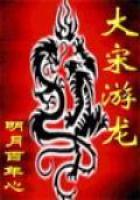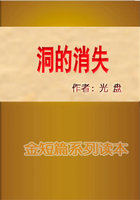After Adam Smith has thus shown that the value of a product in manufacture is equal to v + s (s standing for the profit of the capitalist), he tells us that in agriculture the labourers besides "the reproduction of a value equal to their own consumption, or to the [variable] capital which employs them, together with its owners' profits . . ." -- furthermore, "over and above the capital of the farmer and all its profits regularly occasion the reproduction of the rent of the landlord." (Book II, Ch. 5, p. 243.) The fact that the rent passes into the hands of the landlord is wholly immaterial for the question under consideration. Before it can pass into his hands, it must be in those of the farmer, i.e., of the industrial capitalist. It must form a component part of the value of the product before it becomes a revenue for anyone. Rent as well as profit are therefore, according to Adam Smith himself, but component parts of surplus-value and these the productive labourer reproduces continually together with his own wages, i.e., with the value of the variable capital. Hence rent and profit are parts of the surplus- value s, and thus, with Adam Smith, the price of all commodities resolves itself into v + s.
The dogma that the price of all commodities (hence also of the annual commodity-product) resolves itself into wages plus profit plus ground-rent, assumes even in the intermittent esoteric constituents of Smith's work the form that the value of every commodity, hence also that of society's annual commodity-product, is equal to v + s, or equal to the capital-value laid out in labour-power and continually reproduced by the labourers, plus the surplus-value added by the labourers through their work.
This final result of Adam Smith reveals to us at the same time -- see further down -- the source of his one-sided analysis of the component parts into which the value of a commodity resolves sources of revenue for different classes engaged in production has nothing to do with the determination of the magnitude of each of these component parts and of the sum of their values.
All kinds of quid pro quo 's are jumbled together when Adam Smith says: "Wages, profit, and rent, are the three original sources of all revenue as well as of all exchangeable value. All other revenue is ultimately derived from some one or other of these." (Book I, Ch. 6, p. 48.)1) All member of society not directly engaged in reproduction, with or without labour, can obtain their share of the annual commodity-product -- in other words, their articles of consumption -- primarily out of the hands of those classes to which the product first accrues -- productive labourers, industrial capitalists, and landlords. To that extent their revenues are materially derived from wages (of the productive labourers), profit, and rent, and appear therefore as derivative vis-a-vis those primary revenues. But on the other hand the recipients of these revenues, derived in this sense, draw them by virtue of their social functions -- as a king, priest, professor, prostitute, soldier, etc., and they may, therefore, regard these functions as the original sources of their revenue.
2) -- and here Adam Smith's ridiculous blunder reaches its climax. After starting by correctly defining the component parts of the value of the commodities and the sum of the value-product incorporated in them, and then demonstrating how these component parts form so many different sources of revenue, [39] after thus deriving the revenues from the value, he proceeds in the opposite direction -- and this remains the predominant conception with him -- and turns the revenues from "component parts" into " original sources of all exchangeable value," thereby throwing the doors wide open to vulgar economy. (See our Roscher. [Marx has in mind W. Roscher's System der Vokswirtschaft. Band I: Die Grundlagen der Nationalökonomie . Dritte, vermehrte und verbesserte Auflage.
Stuttgart und Augsburg, 1858. -- Ed .] ) 3. The Constant Part of Capital Let us now see how Adam Smith tries to spirit the constant part of the capital-value away from the commodity-value.
"In the price of corn, for example, one part pays the rent of the landlord."The origin of this constituent of value has no more to do with the circumstance that it is paid to the landlord and forms a revenue for him in the shape of rent than the origin of the other constituents of value has to do with the fact that as profit and wages they form sources of revenue.
"Another [portion] pays the wages or maintenance of the labourers" ["and labouring cattle," he adds] "employed in producing it, and the third pays the profit of the farmer. These three parts seem" [they seem indeed] "either immediately or ultimately to make up the whole price of corn." [40] This entire price, i.e., the determination of its magnitude, is absolutely independent of its distribution among three kinds of people. "A fourth part, it may perhaps be thought, is necessary for replacing the stock of the farmer, or for compensating the wear and tear of his labouring cattle, and other instruments of husbandry. But it must be considered that the price of any instrument of husbandry, such as a labouring horse, is itself made up of the same three parts: the rent of the land upon which he is reared, the labour of tending and rearing him, and the profits of the farmer who advances both the rent of this land, and the wages of this labour.
Though the price of the corn, therefore, may pay the price as well as the maintenance of the horse, the whole price still resolves itself either immediately or ultimately into the same three parts of rent, labour" (he means wages), "and profit." (Book I, Ch. 6, p. 42.)This is verbatim all that Adam Smith has to say in support of his astonishing doctrine. His proof consists simply in the repetition of the same assertion.














